Numerous farms in Ireland have wrought iron gates either in use or left idle in a corner.
Shem Caulfield, an artist and historian from Co Kilkenny, says traditional gates are a part of Irish agricultural heritage and they should be maintained, with respect for the blacksmiths who skilfully designed and manufactured them in bygone days.
It is important farmers see the value in these gates before they disappear to the scrapyard – because once they’re gone, they’ll never come back.
History
Iron mining and smelting is regarded as one of the oldest industries in Ireland, dating back to the Iron Age circa 600BC and peaking in 1696, when the export of iron reached 1,692t.
The iron smelting furnaces were located in heavily wooded areas with access to a constant water supply.
English settlers brought large-scale smelting with them to Ireland in the 16th century. The abundance of iron ore, timber, limestone for flux and water power enabled the development of a large-scale iron smelting industry.
However, this industry began to decline from the beginning of the 18th century as forests became depleted and the switch was made to coal-based (coke) fuel furnaces in Britain. However, iron was used in Ireland for years later to make cart wheels, horse shoes, fire utensils and gates, etc.
Shem says wrought iron is a pure iron and is a very ductile and malleable material. It was used in the construction of quality traditional field gates that we still see in Ireland today.
“The word wrought means worked by hand,” explains Shem. At the corner of every road, there was a blacksmith. He says these men were highly skilled manufacturers.
He thinks it is important to acknowledge their work by maintaining the gates they made a century or more ago.
These gates were put together in the traditional way. Pieces of metal were joined together in a forge using hot rivets. A rivet is a heated bar placed into a hole between two pieces of metal; its ends are hammered to prevent it slipping out from the hole. This is an effective method of joining two metals. Welding replaced this practice in modern times. On the main frame of a gate, forge welding was used. With forge welding, the pieces to be joined are heated to what is referred to as welding heat or when the metal is a bright yellow colour.
To create mortise and tenon joints, the two heated pieces were brought together and merge into one as they cool.
Maintaining a gate
Pat Monaghan is a fifth-generation blacksmith from the village of Caherlistrane, Co Galway. He specialises in restoration, repair and extension work on all types of gates – blacksmith gates, field gates, entrance gates, etc. He showed me an example of a gate he restored for a client in Connemara.
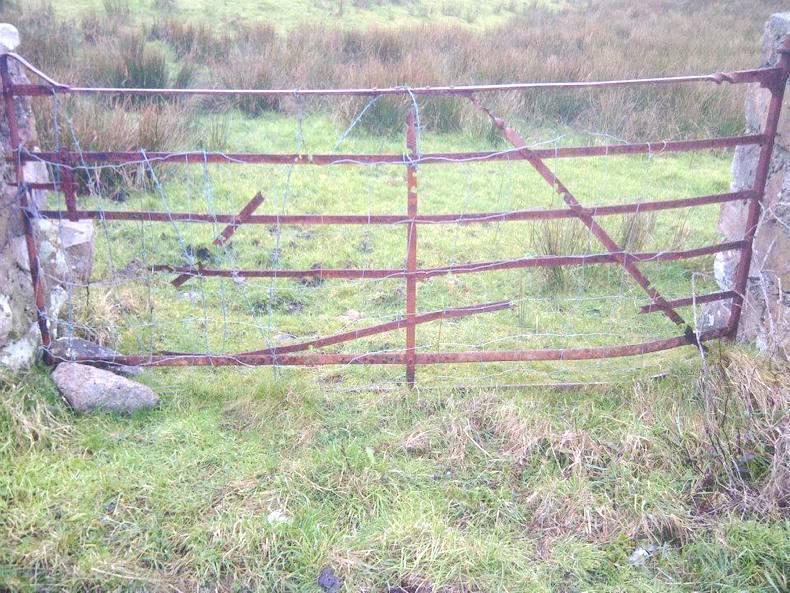
Picture 1
Here we see the very old gate in a field in Connemara. It was in very poor shape, with a lot of iron bars rusted off it and sheep wire holding it together.
Pat got it back to the workshop and started to work on it. He cleaned it down with a soft brush on a 9in angle grinder. Sometimes, if he has a number of gates to restore, he sends them away for sand blasting.
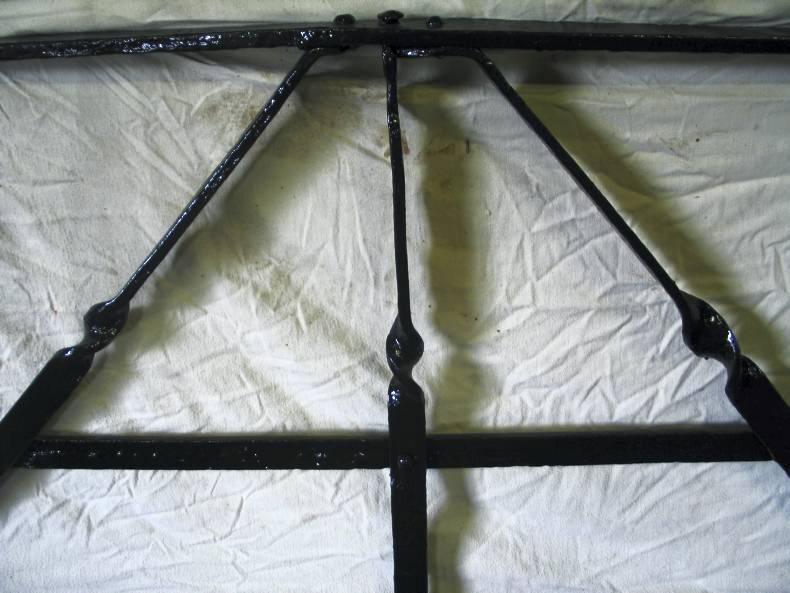
Picture 2
He replaced all the broken bars with a mixture of the wrought iron available and mild steel, and used rivets to connect the vertical bars to the horizontal bars.
On the top of the gate in picture two, we can see rivets and also a twist in the bar of the gate. The twist helps to change the angle of the bar and strengthens the gate.
Where a mortice joint was broken, Pat used a butt weld to connect the replacement bar to the location where the old joint was. Pat prefers to use as much of the original materials and ways as possible rather than modern methods, but sometimes compromises have to be made to suit the customer’s budget.
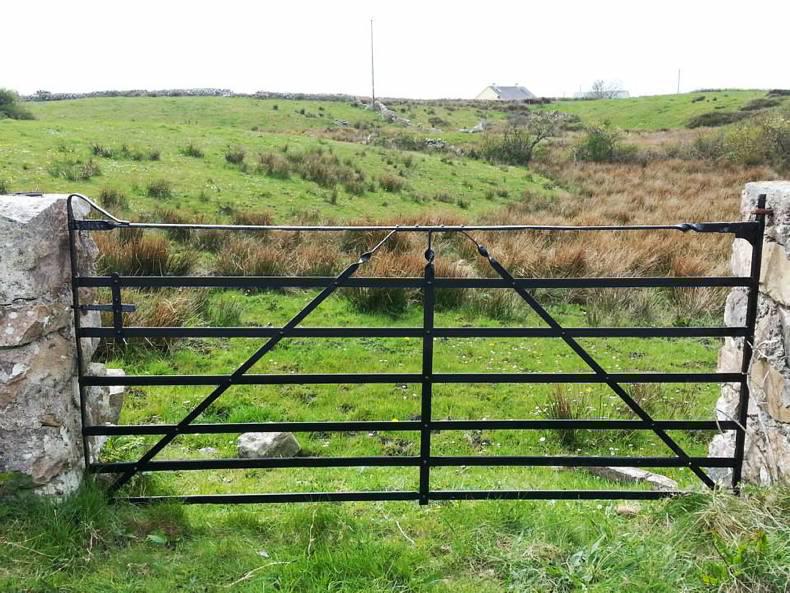
Picture 3
Once the interior bars and frame were fully restored, Pat gave the gate two coats of an oxide paint. He then finished the gate off with two coats of a glossy oil-based paint. The gate was hung back in its original position and it really looks the part now. The repairs cost €150. Pat says the cost depends on the condition of the gate and how much the client wants to spend. It costs more to use original materials and traditional joint work. For more information on Pat’s work, see his website at
Get it out of the ditch – The most important thing you can do is get your gate out of overgrown vegetation and persistently damp conditions. If you can take it out and hang it somewhere temporarily, it will go a long way to keeping it intact. Most of these gates are still structurally sound and can be used even if no repair work is carried out. A reasonably maintained 100-year-old wrought iron gate should still have a longer life expectacy than a modern tubular gate.
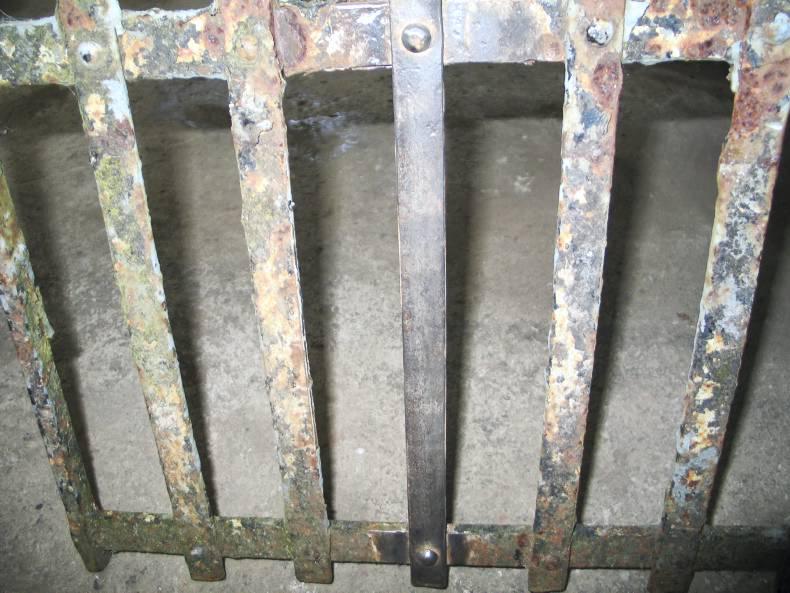
Brush away corrosion – Use a wire brush to get rid of old paint and flakes of corrosion that can create crevices in the iron work. These crevices can hold water and lead to further damage. A soft brush attached to an angle grinder can also be used. Sand blasting is another option for getting rid of the rough material and leaving a smooth finish. Once it is cleaned off, it can be left as it is and a light coat of rust will develop, which will protect it, or it can be painted.
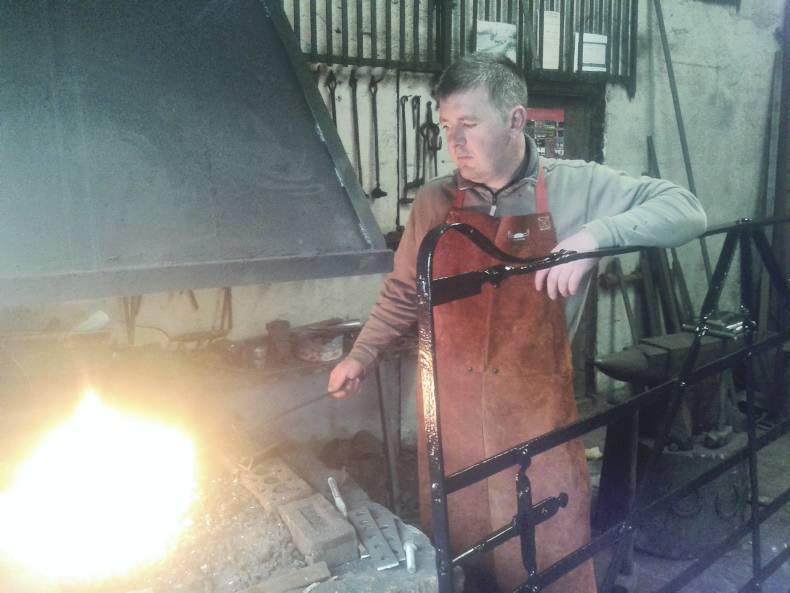
Bring it to your local blacksmith – If your gate needs repairing, it is best to bring it to a professional, such as Pat Monaghan pictured here, who will carry out the repairs using traditional methods and materials. Pat says he doesn’t like to mess with the integrity of a gate. If a client wants a traditional 9ft gate widened, he usually makes up a separate 3ft modern replica to match. The most common gates he sees are the inverted V and the bow shape used in the reinforcing bars. But every blacksmith is different.
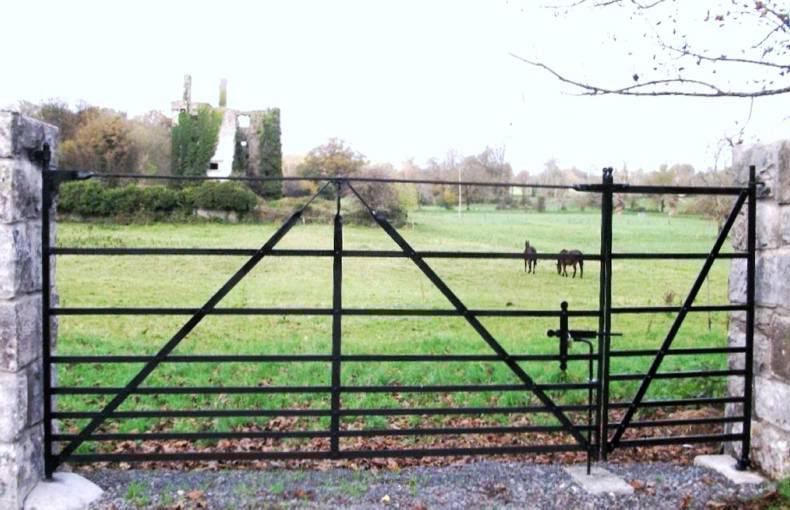
Leave intact – Large modern machines need wider entrances. Where a traditional gate is combined with two stone pillars, it is best to leave intact and make a new entrance to a field. Sometimes a traditional gate can be matched to another modern gate, which will allow the entrance to be widened and the old gate does not have to go. Here we see a new gate designed to match a traditional gate to widen the entrance and maintain the integrity of the old gate.

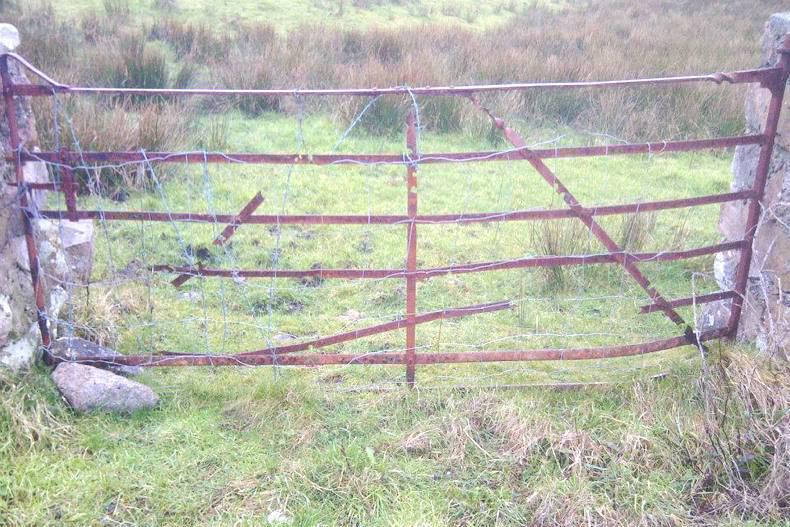




 This is a subscriber-only article
This is a subscriber-only article











SHARING OPTIONS: